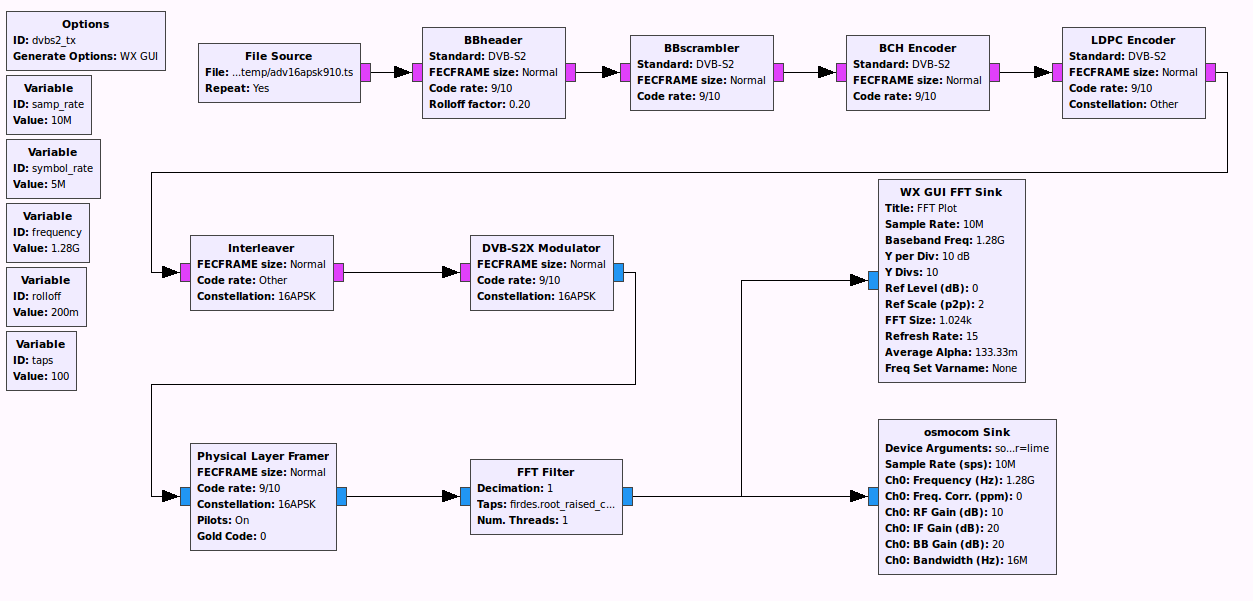One of the reasons why I find the LimeSDR interesting is that it can transmit high data rates over a wide frequency spectrum. It covers many ham radio bands where we can legally transmit wide signals using high power. This allows us to experiment cutting edge technologies such as digital video transmission over the air.
In this experiment I explored transmitting a high definition video file over the air using GNU Radio and the LimeSDR board.
The latest version of GNU Radio includes a digital TV library, gr-dtv, written by Ron W6RZ and others. This library can be used to generate a digital baseband signal according to current digital video broadcasting standards, namely ATSC, DVB-T, DVB-T2, DVB-C and DVB-S2.
The digital baseband signal is then transformed to RF using appropriate transmitter hardware, in this case the LimeSDR.
I took an example script included in the package, dvbs2_tx.grc, and modified it to use the LimeSDR. The script was configured for BladeRF through the gr-osmosdr. It already used 10 Msps sample rate which works fine with the LimeSDR.
I chose DVB-S2 system because that allows me to transmit in the 1.28 GHz ham radio band and receive the signal using an off the shelf satellite TV receiver without any additional RF hardware. Recall that satellite TV is transmitted on Ku (11-12 GHz) and Ka (18-20 GHz) bands but this frequency is converted down to 900 – 2200 MHz at the receiver. So, the input of a standard satellite TV receiver is between 900 – 2200 MHz.
The GNU Radio script requires a transport stream input. A transport stream is a packetized data stream that can contain one or more audio, video and data streams. This is often referred to as a MUX or multiplex.
You can see the DVB-S2 transmitter example for GNU Radio used at the top of this post.
Free and open source A/V tools like FFmpeg and GStreamer can be used to prepare a transport stream using one or more audio and video input. However, for the sake of this experiment I used an existing TS-file downloaded from Ron’s website.
The video below shows my setup consisting of the LimeSDR, an off the shelf satellite receiver and an Airspy used for monitoring the transmitted spectrum.
Digital video transmission over the air has never been so easy!
